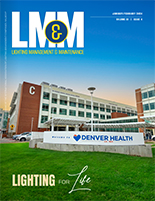 Work zones, accident sites and other roadside incident locations are often chaotic environments where construction workers and first responders are at increased risk of injury or fatality from vehicle collisions. These locations feature flashing warning lights that notify approaching drivers about the potential danger, but rarely provide useful information about visual guidance and at night, can create glare that often makes workers more difficult to see. To address these visual challenges and help reduce risks to roadway and emergency workers, the Lighting Research Center (LRC) at Rensselaer Polytechnic Institute developed a prototype system using wireless communications that allows a user to adjust the intensity, flash frequency, and sequencing of flashing warning lights. Work zones, accident sites and other roadside incident locations are often chaotic environments where construction workers and first responders are at increased risk of injury or fatality from vehicle collisions. These locations feature flashing warning lights that notify approaching drivers about the potential danger, but rarely provide useful information about visual guidance and at night, can create glare that often makes workers more difficult to see. To address these visual challenges and help reduce risks to roadway and emergency workers, the Lighting Research Center (LRC) at Rensselaer Polytechnic Institute developed a prototype system using wireless communications that allows a user to adjust the intensity, flash frequency, and sequencing of flashing warning lights.
In conjunction with a tablet-based controller using wireless communication and global positioning system (GPS) sensors, the locations of individual lights can be plotted on a map. Knowing their locations, a user can select lights to flash in sequence, for example, to help approaching drivers identify and navigate lane closures. Further, the sequential flashing pattern can update itself in real time if lights are moved as conditions change on the road. Light sensors within the lights can sense ambient light and adjust intensities to lower values at night to avoid creating glare.
An overview of the system design is found in a technical paper published by the Society of Automotive Engineers and co-authored by LRC researchers Mark Rea, Nicholas Skinner and John Bullough. The paper is entitled “A Novel Barricade Warning Light System Using Wireless Communications” and is available online at: https://doi.org/10.4271/2018-01-5036. The paper also includes a link to a short descriptive video, which can be viewed at: https://www.youtube.com/watch?v=HeeNiDrDh5E. |




